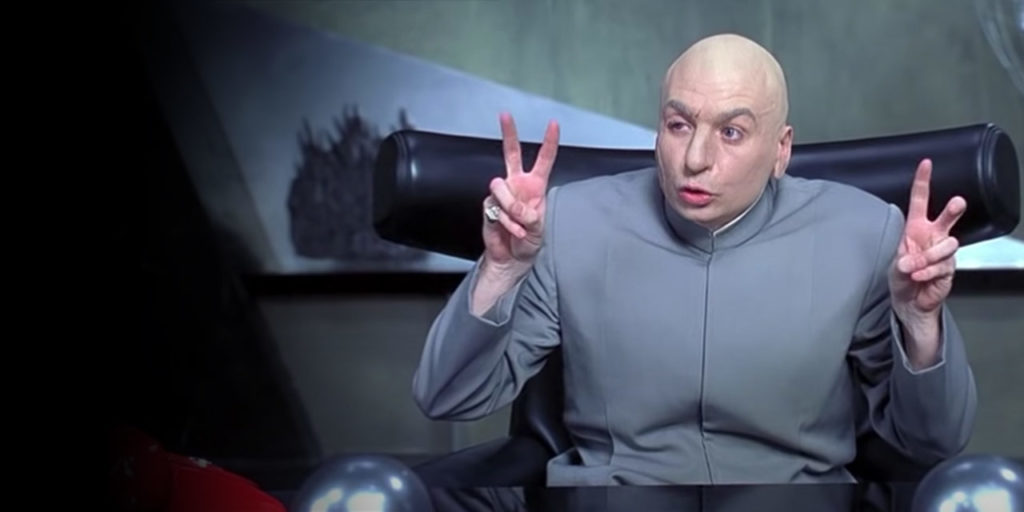2020 has been a real humdinger.
Wildfires, protests, and even murder hornets are bad enough. But the year sure outdid itself by unleashing a plague that overwhelmed hospitals, torpedoed family gatherings, and even crippled the economy.
It leads me to wonder: is there even a damn thing to be thankful for on this COVID-soured holiday?
There is if you’re reading this.
Not that what you’re reading is all that good: it just means that you’re alive, probably healthy, and maybe even have a home. And that’s better off than a lot of folks.
After those basics?
Well, giving “thanks” or finding “the good” with either this year or the plague is admittedly a challenge.

But challenging doesn’t mean impossible. It just means you may have to search for a useful lesson rather than an overwhelming positive. Hopefully, you can find a lesson that might lead to really good things in years to come.
That’s how this year has been for me, especially in my business. COVID-19 has stretched my nerves to the limits, but it has also made me a better coach.
Wants vs. Needs
COVID-19 taught me a very important lesson: the difference between what someone wants versus what they really need.
Think back to early March, back when gyms started shutting down.
My immediate thought was, this is NOT good.
I wasn’t thinking only about my business or my own training.
The gyms closing meant many would lose an important stress reliever — for some, it was their only stress reliever. The heightened anxiety we were all feeling those days made it seem even worse.
So, when the inevitable happened I immediately started firing out home gym programs.
…and bodyweight-only programs.
…and dumbbell- and a bench-only programs.
I was even sending out “bodyweight plus a couple of random dumbbells that don’t match” programs, which also required a trip to the liquor cabinet to finish.
Clients were stressed, so I thought matching their stress with prompt attention was helpful.
But in many cases, I was giving them what their STRESS wanted: a workout.
What I should have been doing is giving them what their health really needed: my coaching.
In the context of everything that was happening, this meant giving my clients a few things:
1. Assurance that, yes, it really is okay to not work out for a few days — or even longer.
Even if you can’t lift weights for 8-12 weeks you will NOT lose much if any muscle size. Maybe just a little strength — but that comes back.
It really is NO BIG DEAL.
2. Context-appropriate training options.
Doing 45 minutes of outdoor steady state cardio followed by some basic bodyweight drills will burn calories, evaporate stress, and feels good.
It’s also MUCH more productive, all things considered, than some “10 sets of dips between chairs + 10 sets of pull-ups off your balcony” abomination.
3. Helpful strategies for things they can control in the face of so much they CAN’T control.
The most productive example is diet, so that was my focus. Every client who focused HARD on diet instead of buying into bullshit narratives like “the quarantine 15” ended the lockdown leaner than they were going in.
4. Extra attention and ideas for restorative measures.
This is the stuff that tends to get skipped when times are good, but these things REALLY help when times are bad. Sleep structure, fresh air, social media fasts, calling friends & family, even just laughter.
5. More flexible programming.
I’ve always run counter to hyper-specific programming rules like “never train a muscle two days in a row” or “never workout more than two days without taking a day off.”
In my view, you train when you can train, and the body will tend to sort it out just fine. COVID taught me to bend the rules even further. If someone only had access to a full gym once or twice a week otherwise it’s light dumbbells in their kitchen, you can bet we’d cover as much ground as possible in those gym workouts, over training demons be damned.
Going Forward
While these adjustments were made during COVID, two things are clear:
- They still apply during periods of relative normalcy.
- The degree to which we will return to “normalcy” any time in the near future (and even how we define that term, normalcy) is up for debate.
Above, I alluded to finding useful lessons in the midst of everything that’s been happening. I can’t predict the future, but I believe that’s more important than ever.
I’m a fitness guy, so I won’t say something grand about “the bigger picture.”
Instead, I’ll stay in my wheelhouse.
…and I’ll say this:
Succeeding at fitness, going forward, is going to require all of those things I talked about above:
- Don’t get caught in “perfect” compliance to a program that’s exhausting you and wearing you out. Take time off. It’s fine.
- There’s more to training and exercise than type-IIb muscle fibres. Go for a walk and get some fresh air.
- See point #1? Don’t freak out over something you can’t control if there are a bunch of things you can control are staring you right in the face. (Almost everyone has a blind spot or some aspect of their routine they can improve. What’s yours?)
- Those things you can control? They just might include things like… sleep structure, fresh air, social media fasts, calling friends a family, even just laughter.
- If you are trying to maintain a weight-training program, then for goodness sake bake some flexibility into it right at the outset. (Maybe consider baking in some of those walks out in the fresh air, too.)
We don’t have to make some massive “reach” for some overwhelming positive takeaway for events that are, frankly, shitty.
But we can learn lessons and, the least, give thanks for and celebrate what we have.
That’s my plan, at least.
– Bryan
